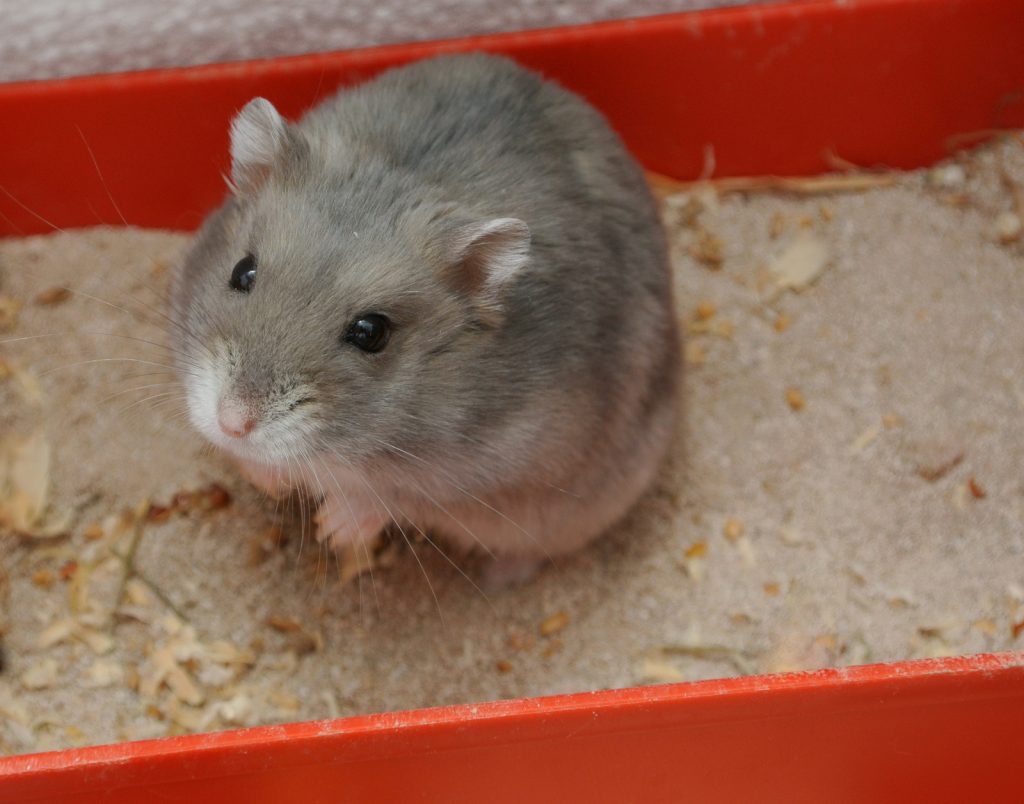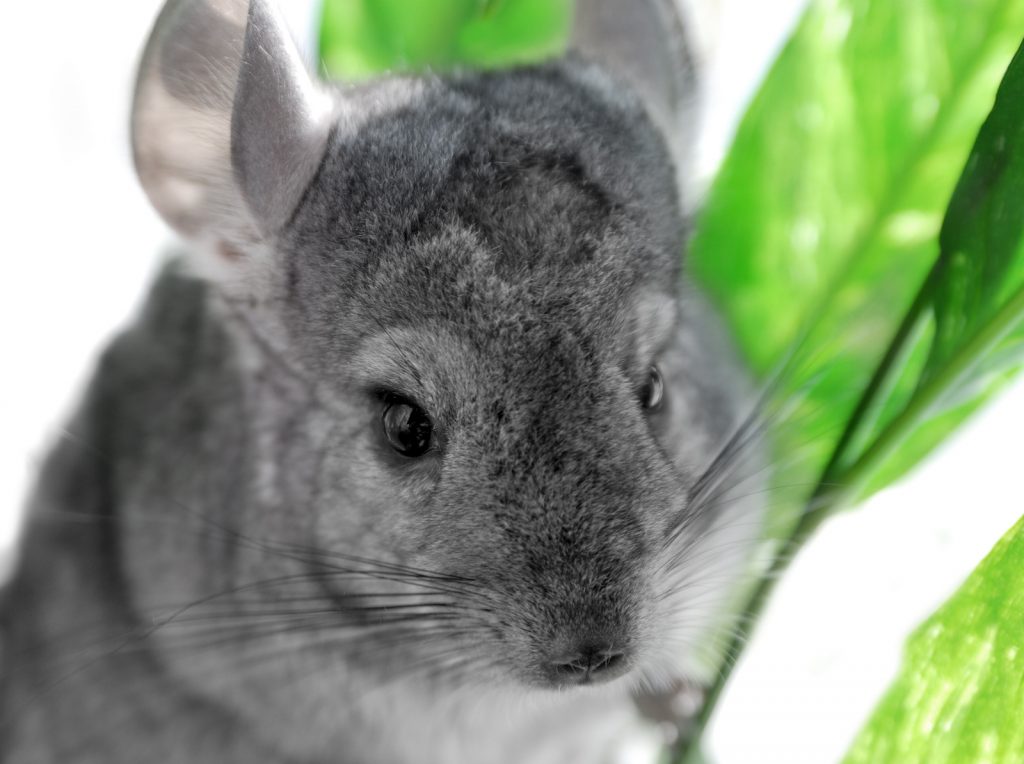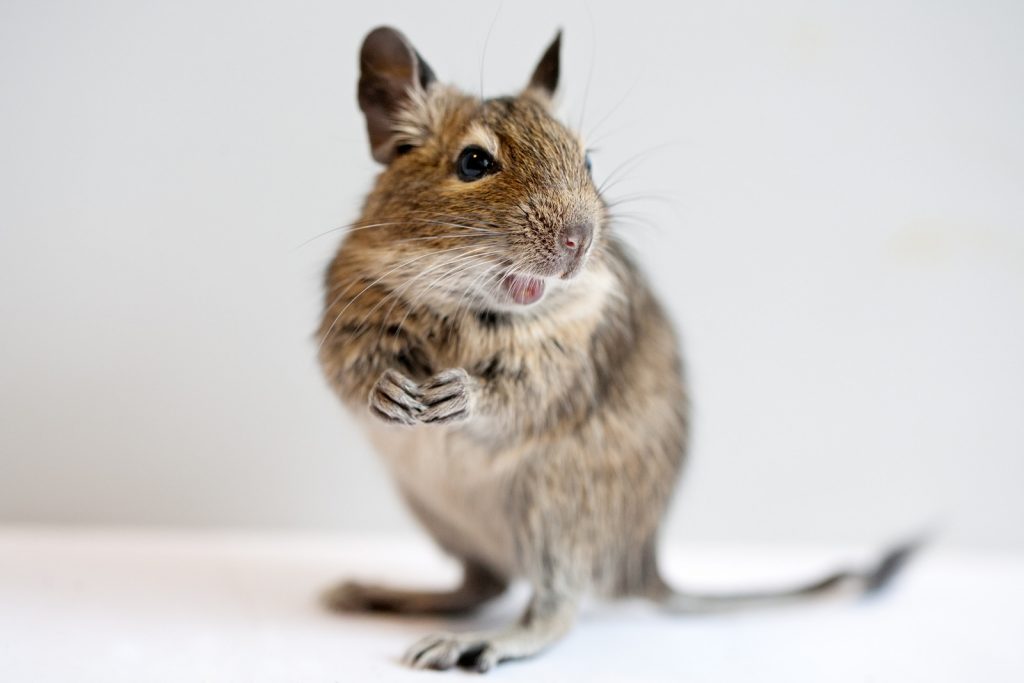Whilst many animals will groom themselves or (like humans) bathe in water to keep clean, there are also some animals that use dusts and sands as a way to wash themselves! Originally from the desert and mountains, chinchillas, degus, gerbils and hamsters rolled around in sand and volcanic dust as a way to keep themselves squeaky clean. And, whilst it’s a bit impractical to transform your living room into the Sahara, it’s always good to give these pets regular access to dust or sand baths.
Are sand baths good for small furries?
Small pets should not be bathed with water as it can disrupt the natural oils in their coat, and can also be bad for their health as (due to their size) these little fluffballs can get cold very easily when wet! Because of this, it’s best to allow gerbils, degus, hammys and chinchillas to use a dust or sand bath (while rabbits and guinea pigs will groom themselves to keep clean- they’re not fans of dust or sand baths!).
By having a good roll around in the sand, these bundles of fluff are able to keep themselves clean because the sand or dust particles will act to remove grease or dirt from their fur. Regular dust bathing also enables these animals to perform the natural behaviours that they would in the wild, which will help to increase their happiness through great mental enrichment, while also keeping their coat healthy and soft, and it’s also one of cutest things on earth to watch!

How often do small furries need a sand bath?
Whilst hammys, gerbils and degus need access to a dust bath 2-3 times a week, chinchillas can have a sand bath as often as once a day.
Sand/dust bathing in chinchillas
Chinchillas can particularly benefit from dust bathing because of their super fluffy coat. Their coat is so soft because they have many hairs coming out of each of their individual hair follicles (up to 50 hairs per follicle) but this also makes their coat extremely dense. A very dense coat is much more difficult to dry- so it’s best to avoid ever getting a chinchilla wet.
As water bathing isn’t an option for chichis, sand baths offer the perfect solution, as the fine sand will keep them lovely and clean, removing any excess dirt or oils.
What is chinchilla sand?
Chinchilla sand (often called chinchilla dust or powder) is a very fine and light powder made especially for chinchillas. Because wild chinchillas use volcanic ash to clean themselves, good quality chinchilla dust is also made up of volcanic ash or pumice (or should at least be very similar to these materials) to enable your chichi to replicate their natural behaviours.
Good dust should easily fall off your chilla’s fur as they roll and flip around in their bathing container, taking any dirt or excess grease with it. It’s important to make sure you only sand made especially for chinchillas on your fluff ball as other sands that are not made specifically for chichis may be too coarse to clean their extremely dense coats.
Whilst chinchilla sand is okay to use in degus and gerbils, you should avoid using chinchilla sand in hamsters, as the fine dust particles can cause respiratory problems. Courser bathing sands are generally more suitable for hammys but, again, make sure the sand is high quality and made specifically for hamsters!

Selecting a dust/sand house
Once you’ve chosen your sand or dust, you’ll need to select a house or bath to put it in, and there are a few important things to consider:
- The bath must be big enough for your pet, and must also give them plenty of room to roll around in as this will enable them to properly coat their fur with sand or dust and then fully shake it off
- The bath should also be sturdy and heavy enough that it won’t easily tip over
- If you are bathing your pet outside their cage, you may wish to select a bath with a cover over the top as this will prevent your house from getting covered in sand or dust as your pet shakes around! If you are opting for a covered bath you may decide to get a see-through cover so you can see your pet having fun rolling around and keep an eye on them at the same time. It’s also a good idea to get a cover with holes, so you know the bath is well ventilated and also to help prevent your pet from feeling trapped!
Sand bathing your pet step-by-step
Whether you are using dust or sand there are several important steps to make bath time more straightforward and enjoyable for you and your pet:
- Make sure the bath is on a flat, stable surface that is not elevated. Your pet will likely be doing a lot of rolling and shaking, and you don’t want them to fall out or tip over!
- Make sure the bath is in a safe and quiet place to ensure bathing is a fun and enjoyable experience for your pet. If your fur baby feels scared or nervous, they probably won’t exhibit their normal wild behaviours and bath time just won’t be as fun.
- When you are filling the bath with sand or dust, you should ensure it is about 5cm deep for chinchillas, 1cm deep for hammys and gerbils and degus sand baths should be somewhere in between. This will allow your pet to happily roll around and coat their fur generously with sand.
- Gently place your pet in the bath and monitor them closely until they have finished bathing (which will be when they stop shaking, rolling and flipping)- normally this will be after about 10-15 minutes.
- Make sure you hoover any dust surrounding the tub and clean the bath with a damp cloth- ready for next time!

Always let your pet bathe themself
However tempting it may be, it’s best to let your pet bathe themself. When left to their own devices your pet will be able to fully enjoy themselves and have a proper wash! Trying to help your pet by pouring sand on them or trying to play will disrupt their normal, natural behaviours which will mean they won’t get the full benefit out of their bath and may become stressed. It’s always best to watch your pet bathe from a distance, and only interfere if your pet is at risk of running away or injuring themselves.


